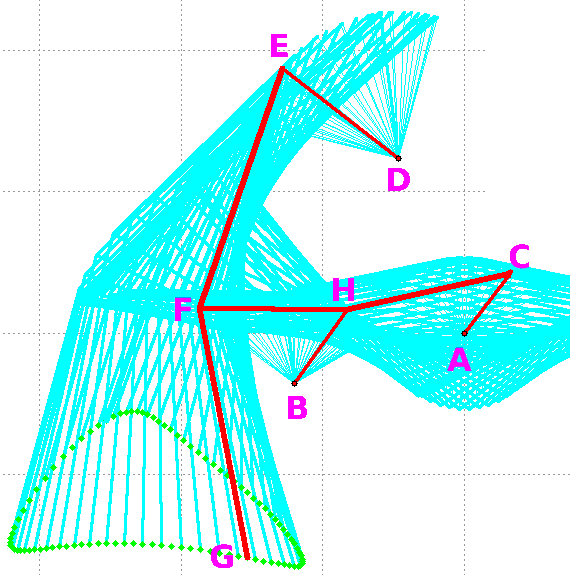
 Another popular walking linkage is the Klann linkage.
Another popular walking linkage is the Klann linkage.
A Klann linkage was described in a manner similar to the method used to characterize the Jansen linkage above, and animated. The dimensions recovered from the patent seem to be sub-optimal in several ways. The measurements have many round numbers and are very symetric, as if designed by a human, and not (yet) optimized by a computer.
I wrote an optimizer for the Klann linkage, and got an optimized Klann geometry, with these dimensions :
AC=17.5; Bx=-38.8; By=-12.5; Dx=-14.6; Dy=41.9; BH=23.7; CF=73.4; CH=38.8; DE=34.1; EF=57.7; EG=111.7; FG=59; FH=35.2;and this optimized Klann orbit.
I worry that this linkage is just not as smooth (torque ripple)
as Jansen.
It looks to me like we are at some extreme geometry at some
parts of the orbit, where the ground forces on a moving mass
will not do much to help keep the crank rotating.
(Nearly parallel forces, little vector in the direction
helping crank rotation)
Building parts (Klann)
Some simple (non-braced)
parts have been drawn
for 3D printing.
The complete (non-braced) assembly has 7 unique parts.
The leg and rocker-bar can be re-used on each side
by flipping them over.
You can type make klann to generate these
parts from openscad.
For each half-assembly (one leg pair, sharing a crank), print:
 Last modified: 130910
Last modified: 130910